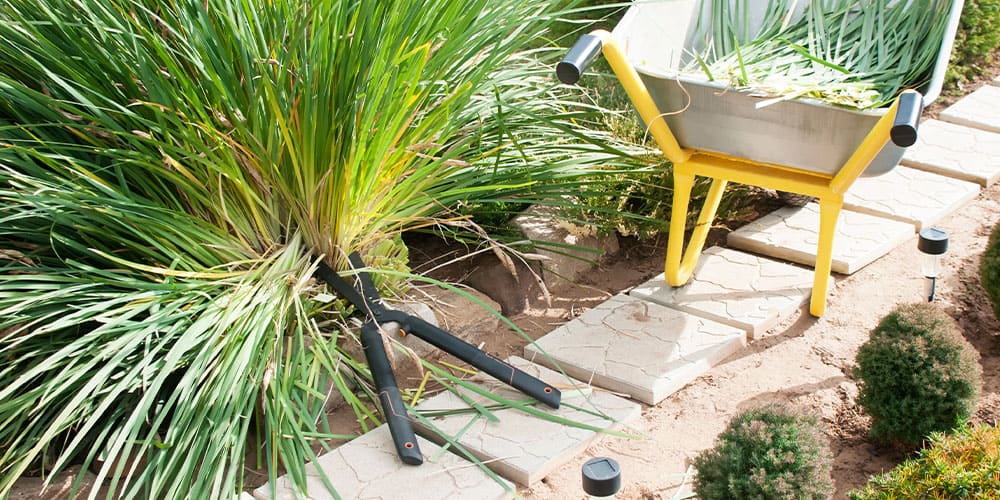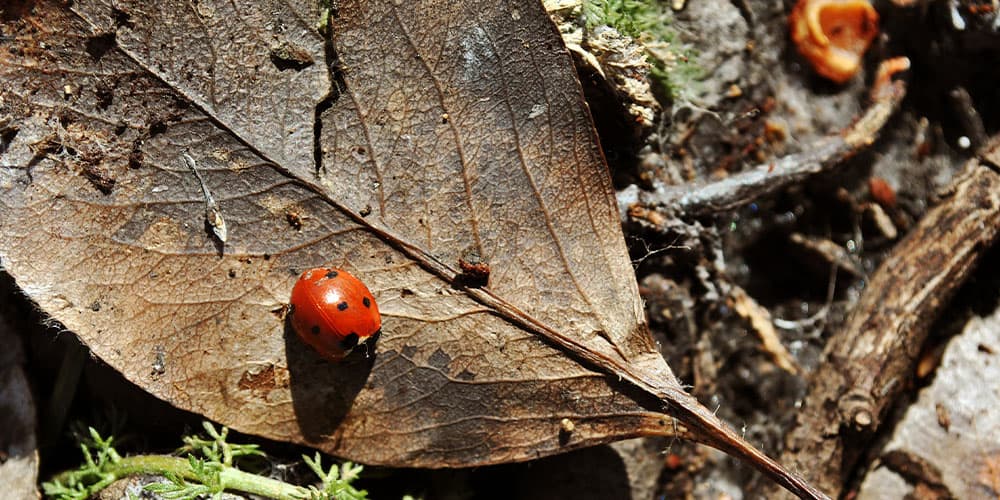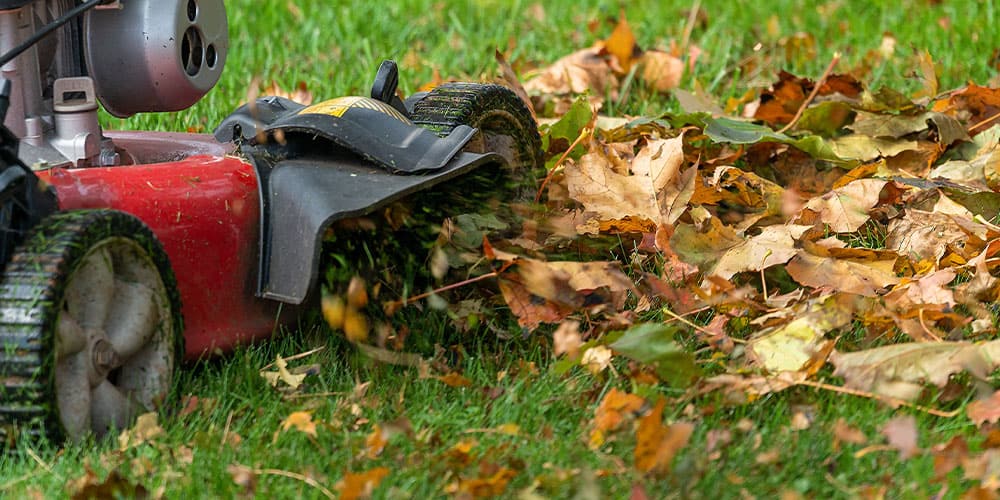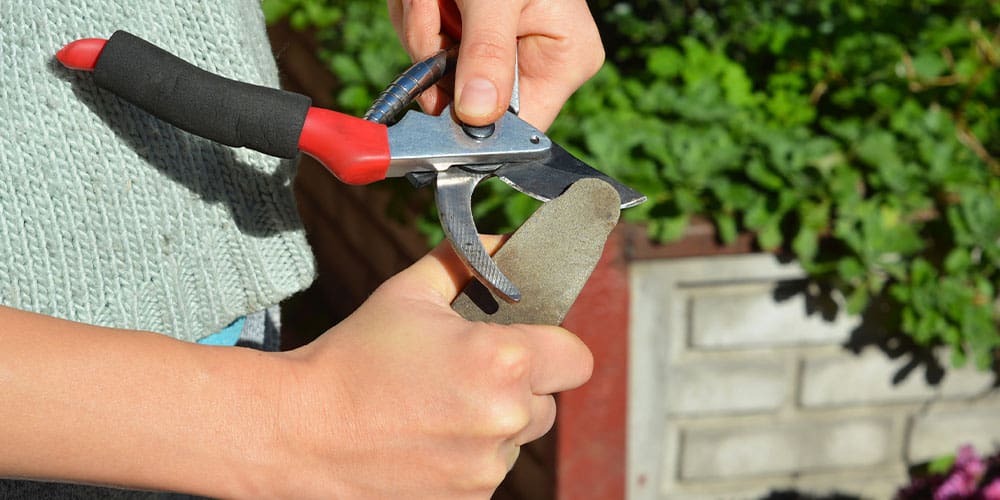Songbirds flying south, trees dropping leaves, insects preparing for hibernation—all around us, the ecosystem is getting ready for winter. Likewise, it’s time to prep our garden and lawns for the months ahead. Here’s a guide to give your landscapes enriching fall care, whether you plan to leave for the off-season or live in New Hampshire year-round.
Cut Back and Remove Diseased Plant Matter
When it comes to a fall clean-up, the primary task on most gardeners’ minds is to cut back any dead leaves or flower stalks on their perennials. It’s essential to do this for plants infected with aphids, powdery mildew, slugs, or any other pests. Cleaning up diseased material now prevents the spread next spring. Be careful to keep any diseased material out of your compost bin!
Cut Back or Leave Other Perennials
If your perennials are disease-free, you have the option to cut them back or leave them. The sole purpose for cutting them back is to have a cleaner appearance in the garden over winter and save you time during the spring clean-up. Like plants in the forest, your landscape plants will do perfectly well if you leave them. In fact, your garden stands to benefit, as dead plant matter provides important habitat for overwintering insects, like solitary native bees, daddy long legs, and butterfly caterpillars.
The only exceptions are peonies, lilies, hostas, and irises, which can be susceptible to fungus if you leave the dead stalks. Remember to cut these back, but feel free to leave the others.
Note: the following perennials should never be cut back in New Hampshire: heuchera, heucherella, tiarella, grasses, lavender, Russian sage, hibiscus, ajuga, lamium, lambs ear, sedum, roses, perennial geraniums, ferns, brunnera, bergenia, and most hydrangeas.
Leave Seed Heads for Birds and Winter Interest
Another benefit of leaving some perennials standing is for winter interest in the garden. Any perennials with strong flower stalks to withstand snow and interesting seed heads are good candidates, including hydrangeas, globe thistle, ligularia, blazing star, sea holly, black-eyed Susan’s, and ornamental grass. The seed heads also provide food for resident birds when other food is scarce.
Leave the Leaves in Your Garden
Autumn leaves are a gift of nutrients and mulch for your garden. They hold moisture in the soil during the dry spells of winter, nourish the soil as they break down, and provide essential nesting sites for countless beneficial insects, including ladybugs, lacewings, and cocooning moths and butterflies. Keep some leaves in your garden, and you’ll retain these insects, which become natural pest controllers next year, pollinators for your vegetables, food for the birds, and beautiful creatures of their own.
Note: to reap the most benefits from leaves, remember to wait until the insects emerge from hibernation next year before you start your spring clean-up. If you have an excess amount of leaves on your lawn in the fall, rake them up and use them as the all-important “browns,” or carbon component, in your compost pile.
Spread Compost on Your Soil
Whether you’re growing vegetables, perennials, fruit trees, or shrubs, all gardens benefit from compost in the fall. It replaces the nutrients your plants use during the growing season and mixes into the soil over winter, making your beds ready for planting next spring. For avid gardeners or anyone who wants to grow exceptionally tasty and nutritious food, it’s also a good time to take a soil test and add any minerals you find missing. Caring for soil in the fall with compost and amendments leads to healthier plants, which are more resilient against pests.
The Essentials of Fall Lawn Care in New Hampshire
- Mow and Mulch Leaves: too many leaves left on your grass can suffocate it over the winter. It’s best to shred some with the mower, leaving them behind as nutrients for your lawn, and transfer the rest to your garden or compost pile.
- Aerate, if Necessary: aeration helps loosen compacted lawns and bring airflow to the roots. It’s only necessary if your lawn is hard and compacted.
- Feed Your Lawn: just like your garden, you can improve the soil and health of your lawn by raking in a light layer of compost.
Other Important Tasks for Fall Lawn and Garden Care
- Note Perennials to Divide in the Spring: it’s too late to divide perennials now, but you can look for any plants that are crowded or have dieback in the center, make a note, and plan to divide them in the spring.
- Water Evergreens: giving them water in the fall helps them retain moisture throughout the winter and prevent winter burn.
- Final Tool Care: after all your garden and lawn care is complete, clean any tools, sharpen them, and oil them for protection against rust over the winter.
For supplies or other questions on garden and lawn care for winter, visit Stephens Landscaping Garden Center in Moultonborough, New Hampshire, and follow us on Facebook or Instagram for more updates!





